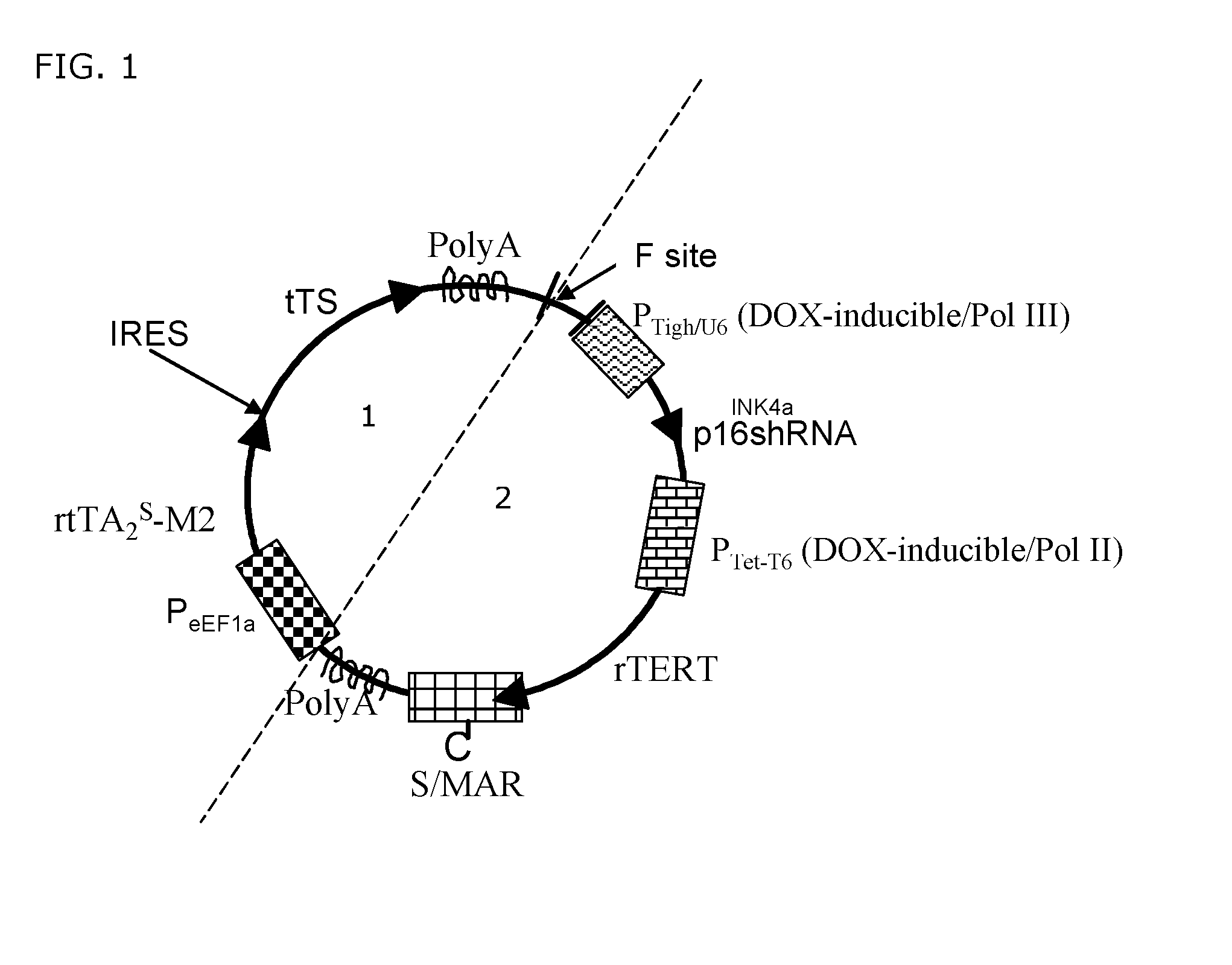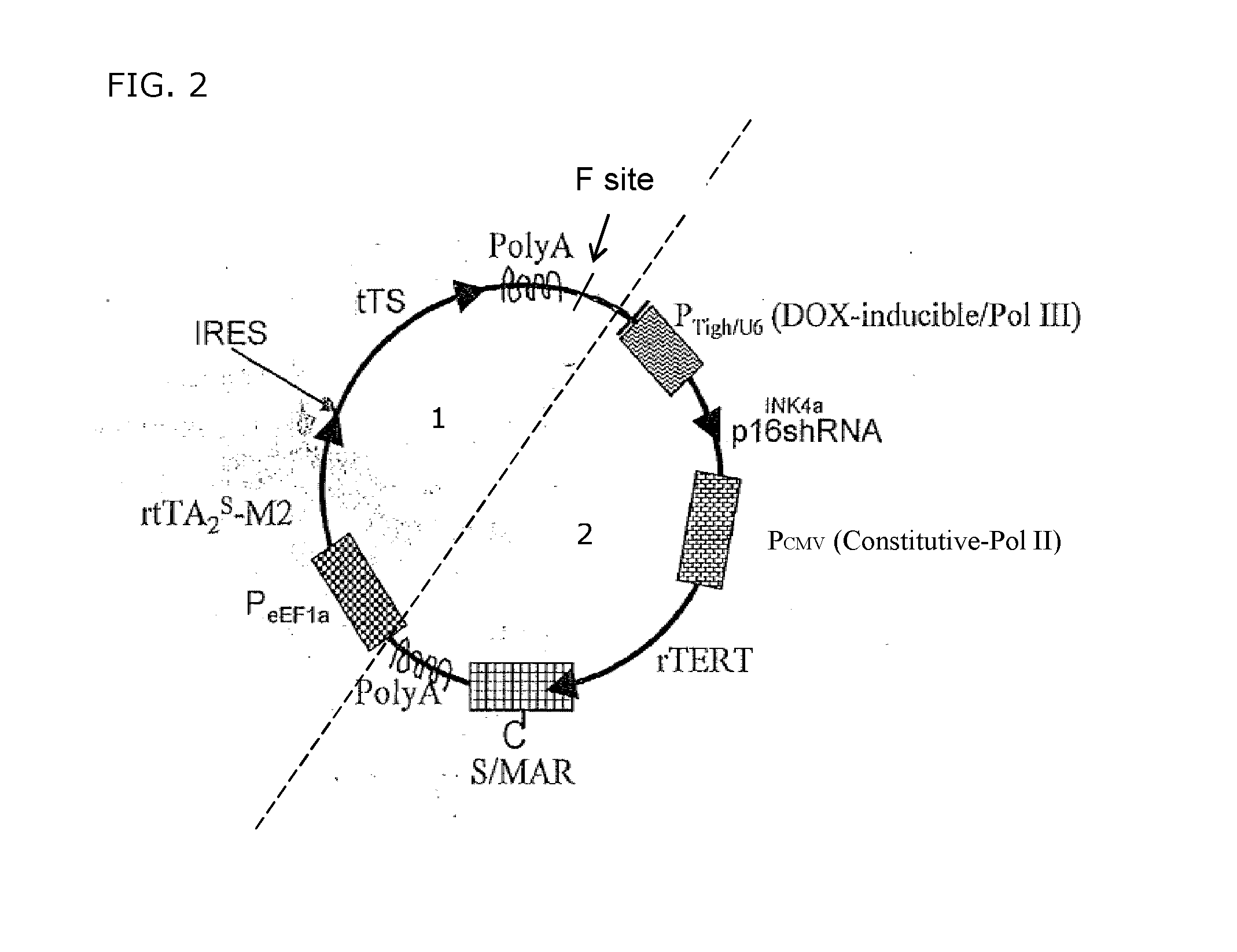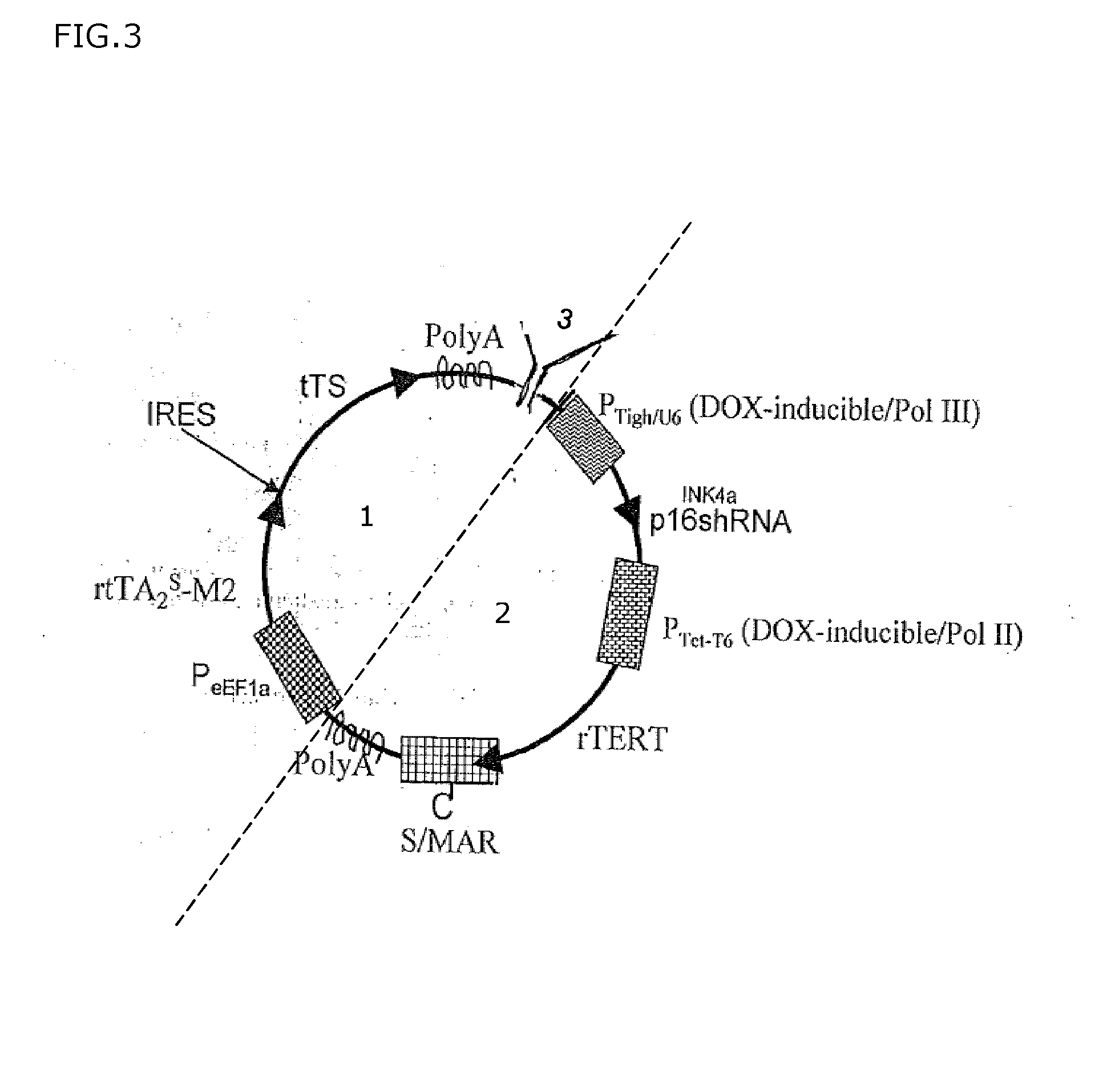Transgenic system for reversibly immortalizing mammalian quiescent cells
a transgenic system and quiescent cell technology, applied in the field of generating reversibly immortalized cells or cell lines, can solve the problems of affecting the fundamental study of primary human tissues, affecting the phenotype of their starting tissue, and a lack of obtainable substrates
- Summary
- Abstract
- Description
- Claims
- Application Information
AI Technical Summary
Benefits of technology
Problems solved by technology
Method used
Image
Examples
example 1
[0092]FIG. 1 depicts an exemplary embodiment of the transgenic system according to the current invention, comprising only one transgene, whereby said transgene is a minicircle, and is devoid of a prokaryotic region. The transgenic system according to FIG. 1 comprises a Tet-on / Tet-off system in the control region (1) with the transcriptional transactivator rtTA2s-M2 and the transcriptional transsilencer tTS constitutively expressed by use of the EF1α promoter. In this particular example, the said transcriptional transactivator and transcriptional transsilencer are transcribed as bicistronic mRNA and comprise an IRES in between which regulates translation. In another embodiment of the invention (not depicted), a second constitutive promoter may be provided which controls either the transcriptional transactivator or transcriptional transsilencer and whereby the presence of the IRES is dispensable. The transgenic system according to FIG. 1 comprises in the regulation region (2) rTERT as...
example 2
[0097]FIG. 2 depicts a schematic overview of an embodiment of the transgenic system according to the present invention, whereby the said telomere length maintenance gene rTERT and the S / MAR region in the regulation region (2) are controlled by a constitutive PCMV promoter sequence. Therefore the S / MAR region will be continuously transcribed in-frame with rTERT and present in the host cell, hereby maintaining the presence of said transgene. The said transgene is independent of the presence of said inducing agent and therefore cannot be eliminated from the host cell. The transgene as depicted in FIG. 2 can for instance be of particular use for the production by human B lymphocytes of therapeutic monoclonal antibodies. In presence of the inducing agent, the said G1-specific tumour suppressor shRNA sequence in the regulation region of said transgene is transcribed and prevents expression of the corresponding tumour suppressor: transgenic cells enter the cell cycle and multiply, but do n...
example 3
[0098]FIG. 3 depicts a schematic overview of another exemplary embodiment of the transgenic system according to the present invention, whereby the transgene of the transgenic system is provided with a prokaryotic region, in order to support amplification in prokaryotes. As production of minicircles is usually cumbersome and labour-intensive, this can be overcome by inserting a bacterial origin of replication into the said transgene, together with a non-antibiotic selection mechanism (3) (STABY™ Technology, Bacterial host strain E. coli Cys21 expressing ccdB poison gene and temperature-inducible Flp recombinase activity; Szpirer and Milinkovitch, 2005, Biotechniques 38: 775-781; WO02066657, WO9958652, Broll et al., 2010, J. Mol. Biol. 395: 950-965). Hence, this said transgene is able to replicate in bacteria for amplification purpose from which it can be obtained without antibiotic selection. The presence of the S / MAR element, inducibly or constitutively controlled, ensures the repli...
PUM
| Property | Measurement | Unit |
|---|---|---|
| concentration | aaaaa | aaaaa |
| concentration | aaaaa | aaaaa |
| diameter | aaaaa | aaaaa |
Abstract
Description
Claims
Application Information
 Login to View More
Login to View More - R&D
- Intellectual Property
- Life Sciences
- Materials
- Tech Scout
- Unparalleled Data Quality
- Higher Quality Content
- 60% Fewer Hallucinations
Browse by: Latest US Patents, China's latest patents, Technical Efficacy Thesaurus, Application Domain, Technology Topic, Popular Technical Reports.
© 2025 PatSnap. All rights reserved.Legal|Privacy policy|Modern Slavery Act Transparency Statement|Sitemap|About US| Contact US: help@patsnap.com



